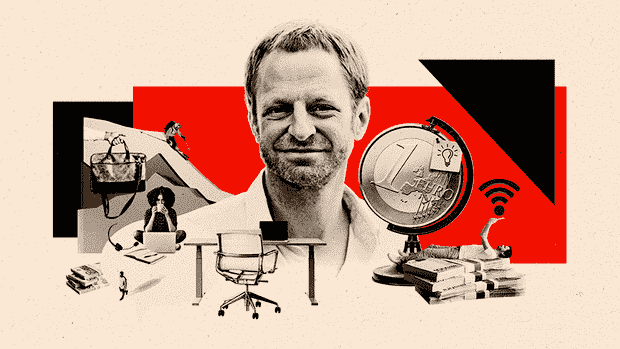Tillmann Prüfer is a member of the editor-in-chief of “Zeit-Magazin”.
I recently read in the “Süddeutsche Zeitung” how to organize meetings properly. An estimate by the scheduling platform Doodle was quoted, according to which the economy lost 65 billion euros through 4.7 billion hours wasted in conferences. 38 percent of Germans complained that meetings were a waste of time.
One wonders what the other 62 percent think. According to the newspaper, the number of meetings in the US alone increased about fivefold from 1976 to 2015. People now spend more than a third of their working hours in conferences. And the British University of Reading claims that when meeting time decreases by 40 percent, employee productivity increases by 71 percent.
The ideal meeting size is seven participants. If there are more, some will daydream while others are lecturing. So there should only be as many people as are actually necessary to achieve the goal of the meeting. And that goal must of course be clear beforehand.
A list of agenda items helps, a meeting should also have something like a beginning and an end. And most importantly, breaks. Science recommends a ten-minute break every half hour and, in addition, meetings that are as short as possible. It should also be laughed at, which obviously makes the whole thing more creative.
Meetings shouldn’t be “hybrid” either, because trying to match people’s images on screens with those in the room can quickly become overwhelming.
Read more columns by Tillmann Prüfer here:
The best time of day for a meeting seems to be midday. However, there is also a warning against blocking lunchtime for meetings. Because for some people there is also the so-called “deep work”. Deep work is the part of work that used to be called “work”. In other words, everything discussed in the meetings that needs to be implemented. And because there is hardly any time left because of all the meetings, the deep work has to be particularly efficient, every minute is valuable. If the deep work falls into the time when one is rather unfocused, the company is lost.
Many meetings don’t have to be there at all. “This meeting could have been an email” is what it says in English. However, I also hear again and again that some get lost in the flood of emails and emails in which they are set in “cc” and spend a large part of their working time answering electronic mail. I hear it might be more efficient to clarify this with a short conversation. So – through a meeting.
More: In search of the tin of life
